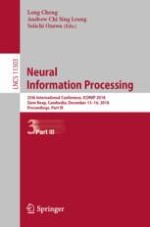
2018 | OriginalPaper | Buchkapitel
fMRI Semantic Category Decoding Using Linguistic Encoding of Word Embeddings
verfasst von : Subba Reddy Oota, Naresh Manwani, Raju S. Bapi
Erschienen in: Neural Information Processing
Aktivieren Sie unsere intelligente Suche, um passende Fachinhalte oder Patente zu finden.
Wählen Sie Textabschnitte aus um mit Künstlicher Intelligenz passenden Patente zu finden. powered by
Markieren Sie Textabschnitte, um KI-gestützt weitere passende Inhalte zu finden. powered by